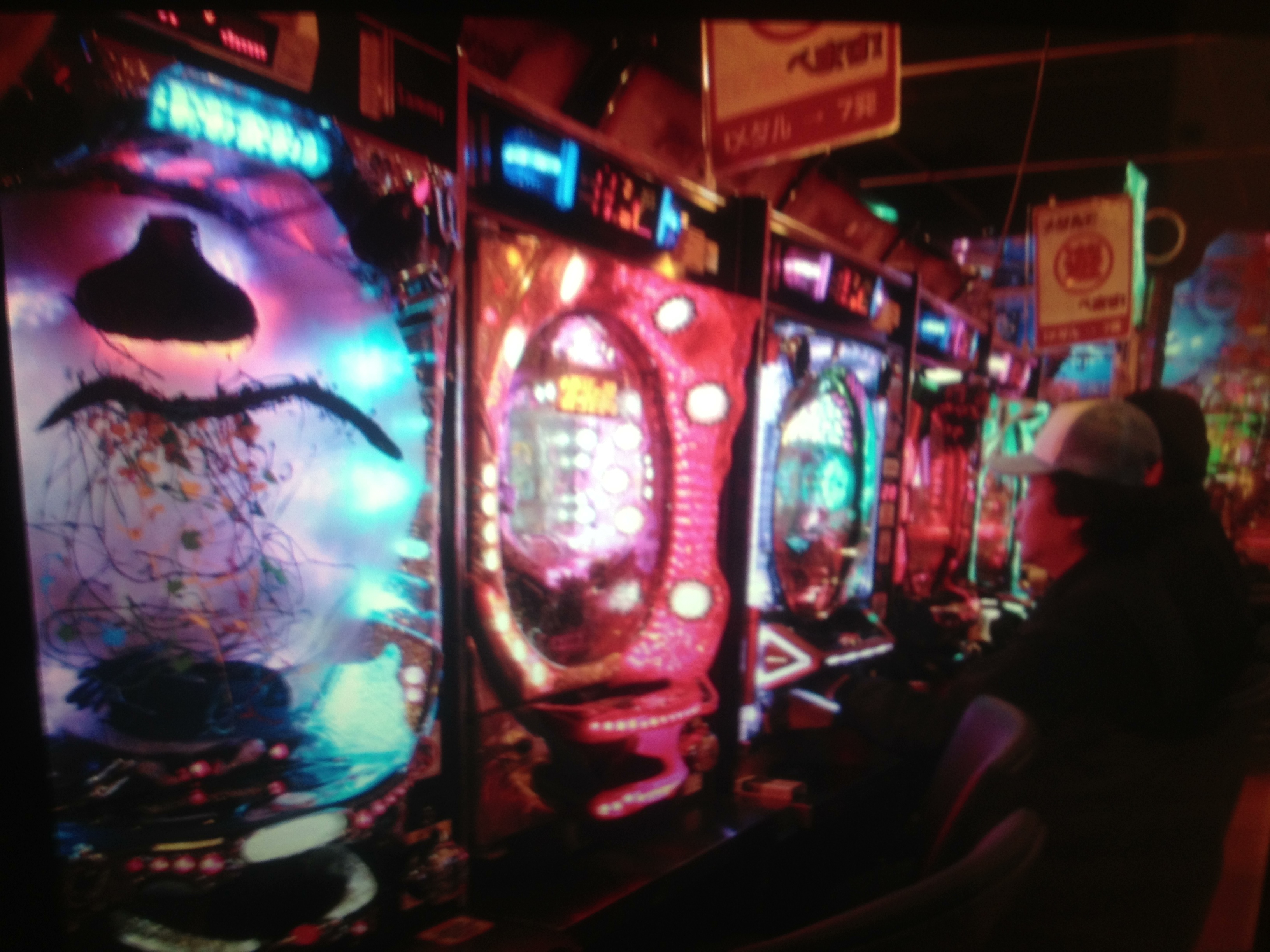If you’re looking for something to do on this lovely X-mas day in Japan, you still have a chance to catch the fascinating Tokyo University Of the Arts Doctoral Program Final Exhibition at the University Art Museum in Ueno. And because it’s Christmas, admission is free.
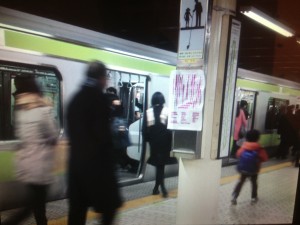
(Well, actually admission has been free since it opened on the 16th, but I figured more people would go if they thought they were getting a bargain.)
I’m not an art critic nor do I know much about art, but I do know some artists–mostly through the introductions of journalist friends with better taste and broader areas of interest than myself. So please pardon me if my musings on this exhibition are mundane or way off. I’m a journalist not an artist.
Because I had previously met, Beatriz Inglessis, the artist who’s current exhibition “The Educational” is still running today, I went to see it last week before leaving Japan. She was kind enough to walk me through the exhibit but before explaining anything she asked me to walk through and tell her what I saw, without offering me any guidance.
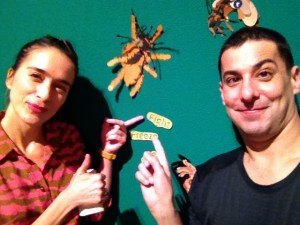
And so I did. Because I see everything as an investigation rather than an interaction, I approached it more like a crime scene than an art exhibition. And I was surprised to find that I felt oddly at home. What’s more, I didn’t do so bad on the impromptu pop quiz afterwords. I’d give myself a B+. (Even in Art, I always think there’s a right answer. This is the nature of a newspaper reporter–everything is in black or white. Sometimes grey but that’s usually just because of laziness.)
“The Educational” is a series of paper-cut outs on major themes as seen through medical science and through educational forums. As the son of a coroner, I could see the art in the science behind the works and appreciate it. Ms. Inglessis added another level of interpretation to the artwork by taking it outside of the workshop and placing them in related environments, which she then photographed. The digital slide show which forms part of the exhibit is a moving microcosmic look at some aspects of Japanese society and security that are enthralling.
It opens with “Transportation”, a crossword puzzle on airport security seemingly designed for the few TSA employees that can actually read. What was highlighted and not highlighted was of interest to me.
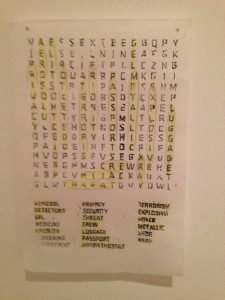
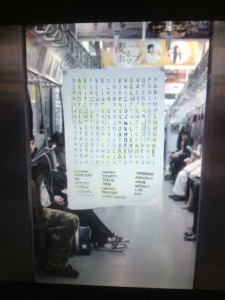
“Primal Scene” was pink female figure on a makeshift operating table.
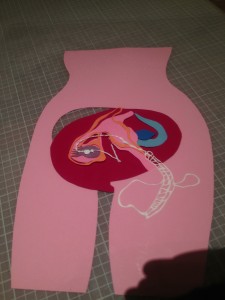
“Primal Scene: Cabinet Panoramic” was based on an MRI (magnetic resonance image) of a couple having sex. I recognized it from having seen a similar photo essay a few weeks back in the the weekly magazine Shukan Post. Although, I’d have to say the penis proportions were a little out of whack. But then again, it is art.
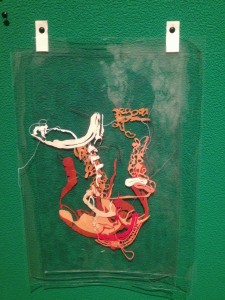
My favorite object of art was “Flight, Flee, Freeze.” Those are the three primary reactions we have to fear. There are objects of fear such as a spider and the other pieces show the neurological and physiological processes involved in dealing with a threat. The Japanese catalog misspelled the title as “Flight, Free, Freeze.” Darn those tricky “l”s. But it did make me stop to think that perhaps we do have four choices when facing our fears. We can fight the source, flee them, freeze and be overcome by them, or perhaps we can learn to free ourselves from our fears and maintain calm. I was reminded of an obscure Buddhist verse, “A man is not a wise scholar simply because he talks much. He is a real pandit (wise scholar) who is tranquil, free from hatred, free from fear.”
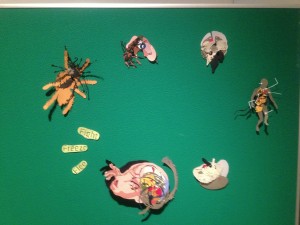
The only person I know who is a man without fear is Daredevil–who also happens to be a comic book character. But never mind.
Drug Mug shot was a paper cut version of the infamous “faces of meth.” Ms. Inglessis noted that after years of attempts to educate youth about the horrors of drug usage, the faces of drug users series–showing their decline in appearance after years of drug use–remains the most effective. Because apparently, teenagers care more about how they look than how fried their brains might get from using hard drugs. Whatever works.
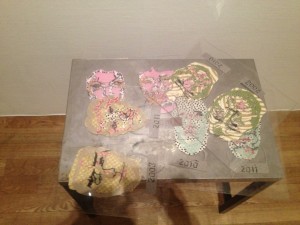
Finally, “Gambling, The Dopamine” is a chart of what happens when a gambler is playing the game, making his bets. Rational thought inducing chemical levels go down, pleasure inducing dopamine levels sky-rocket. The mind of the gambler and the drug user aren’t that far apart. Gamblers turn out to be some of the most optimistic people in the world. They believe that despite the odds, good fortune and wealth are just a few rolls of the dice or a few pachinko balls away.

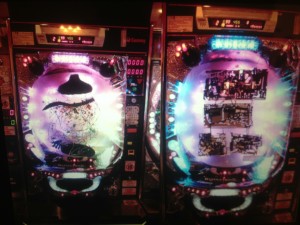
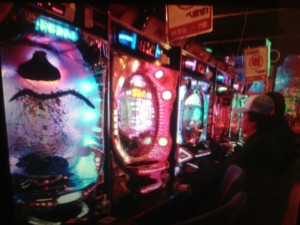
Ms. Inglessis was able to convince a pachinko parlor to let her superimpose her artwork on some of the machines and photograph them. The contrast between the brightly moving machines stoking the gambling urges and the graphic depiction of the dopamine flow that it creates make for fascinating “street theatre.”
I only won at Pachinko once. 50,000 yen. And I never played again. Over time, I’ve learned how to wager on myself and make better bets. If I ever played again, I’d lose it all and more. Sometimes, winning is a simple as knowing when to quit…or not making a bet at all.
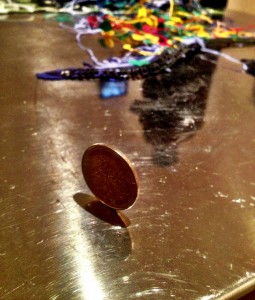
There are several floors of artwork on display at the exhibition–many of them as equally fascinating. If you manage to take the day off today, have a look. The show closes at five.
Beatriz Inglessis has her next exhibition showing at The Container from January 14th. We’ll post details here next year.
